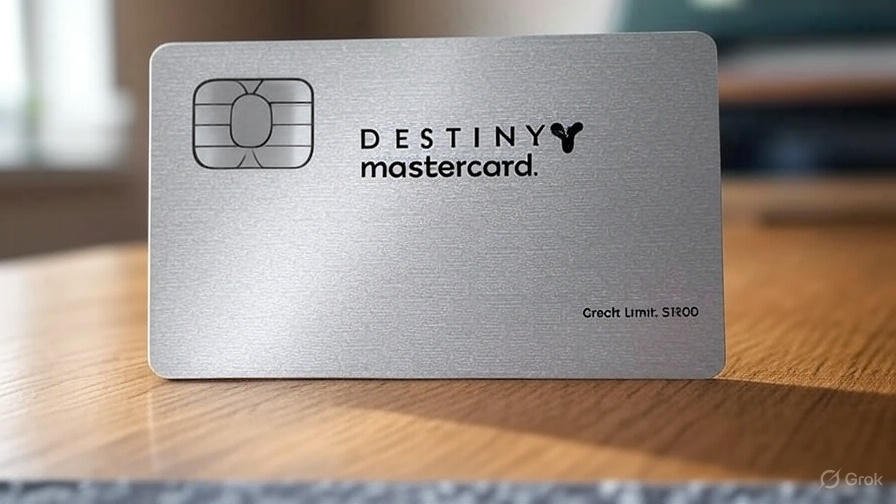In 2025, this card garners attention as a vital option for credit rebuilding. First Electronic Bank, through Concora Credit, offers this unsecured card to those with poor or limited credit. This news article provides the latest updates, exploring its range, influencing factors, and user experiences. Make informed financial choices with these insights. Destiny Mastercard credit limit.
What Defines the Credit Limit?
The limit typically ranges from $300 to $1,000, depending on the applicant’s credit profile. Unlike secured cards, it requires no deposit for immediate credit access. Recent data shows it balances accessibility with risk for subprime borrowers.
Concora Credit assesses credit scores, payment history, and income. New users often start at the lower end. Limits may increase over time with good habits. This structure suits those rebuilding credit, but caution is essential.
2025 Updates on the Limit
The card aligns with a booming credit market. The IMARC Group reports a 6.66% CAGR, projecting $1,316.4 billion in credit card payments by 2033. First Electronic Bank has not altered the $300–$1,000 range this year.
User feedback indicates periodic reviews may raise limits for reliable payers. This adaptability stands out in a market led by Visa and Mastercard. Stay updated on these trends to leverage your card effectively.
Factors Shaping Your Limit
Your limit depends on several factors. Credit score tops the list, with 500–600 scores often yielding $300 limits. Income and debt-to-income ratio also play roles.
- Credit Score: Scores of 500–600 set lower limits.
- Payment History: Timely payments boost limit potential.
- Income: Higher earnings support larger limits.
- Debt Levels: Less debt enhances approval odds.
Pre-qualification online lets you estimate your limit. This avoids hard credit checks and sets clear expectations. Learn more about credit utilization from the Consumer Financial Protection Bureau.
Benefits and Drawbacks
The limit offers unique pros and cons. It provides credit without a deposit, aiding poor-credit users. Limits can grow with responsible use, supporting financial growth.
- Pros: No deposit; potential for increases.
- Cons: Low starting limits raise utilization risks; fees add costs.
However, the $300–$1,000 range challenges utilization goals. Keeping balances below 30% remains critical for score gains.
User Insights
Users share varied experiences with the limit. One said, “I began with $400. After six months of payments, it rose to $700.” This shows growth potential.
Another noted, “My $300 limit feels tight. Everyday purchases strain utilization.” Online trends suggest strategic use maximizes benefits. Monitor your progress to optimize results.
Strategies to Boost Your Limit
Increasing the limit takes effort. Start with consistent on-time payments. This builds a strong payment history for reviews.
- Pay on Time: Avoid late fees to show reliability.
- Reduce Debt: Lower other debts to improve your profile.
- Request a Review: Ask Concora Credit after six months.
- Boost Income: Higher earnings justify larger limits.
Some users succeed with requests. Others await automatic reviews, which occur periodically.
Comparing to Other Cards
The limit varies against competitors. Discover it Secured ties limits to deposits, often starting above $500. Capital One Platinum Secured begins at $200 but grows with good use.
- Discover it Secured: Deposit-based limits often exceed $500.
- Capital One Platinum: Starts at $200 with growth potential.
- Credit Union Cards: Offer customized limits for members.
These options suit those wanting higher initial limits, though they may need deposits or better credit.
Effect on Your Credit Score
The limit impacts your credit score. Using over 30% of it, like $90 on a $300 limit, can lower it. Paying down balances boosts your score.
The card reports to all three bureaus. This amplifies the effect of limit management. Track utilization monthly for steady progress.
Expert Tips for Management
Dr. James Carter, a credit specialist, offers these tips. Pay your balance monthly to avoid interest. Monitor spending to stay under 30% utilization.
- Full Payments: Clear balances before due dates.
- Track Spending: Use apps to manage usage.
- Avoid Fees: Pay on time to dodge penalties.
- Review Regularly: Check statements for updates.
“Managing utilization keeps your score on track,” says Carter. Apply these steps for success.
Frequently Asked Questions
What is the starting limit?
It typically starts at $300–$1,000 based on your credit profile.
How can I increase it?
Make on-time payments and request a review after six months.
Does it affect my score?
Yes, high utilization over 30% can lower it. Pay down balances to improve it.
Conclusion
In 2025, the card supports subprime borrowers with a $300–$1,000 range. It offers credit without a deposit. Responsible use can raise limits, but fees and low starts pose challenges.
This card aids credit rebuilding. Compare options and manage utilization wisely. Explore more details today.
